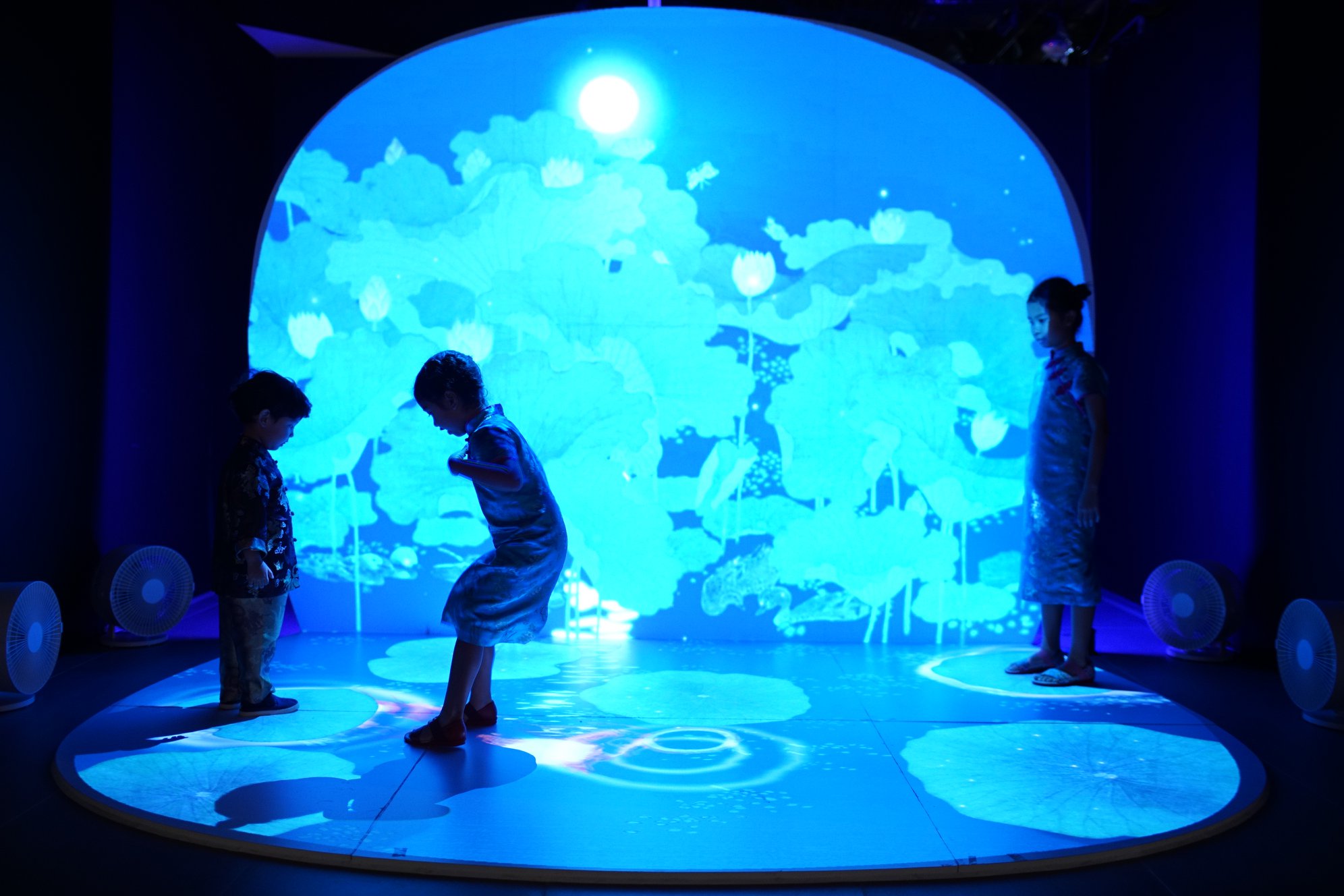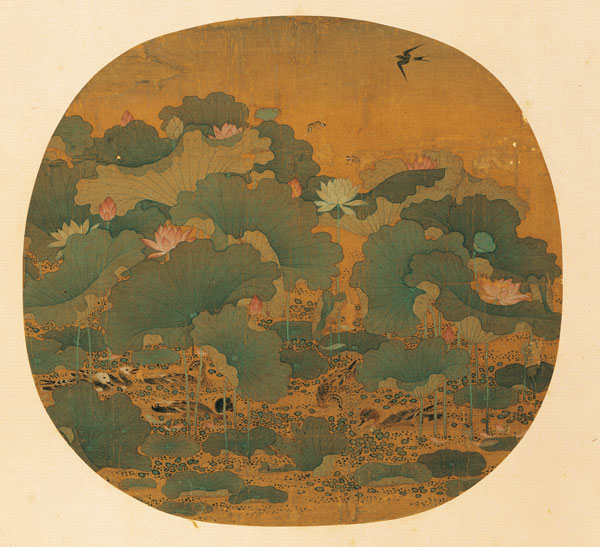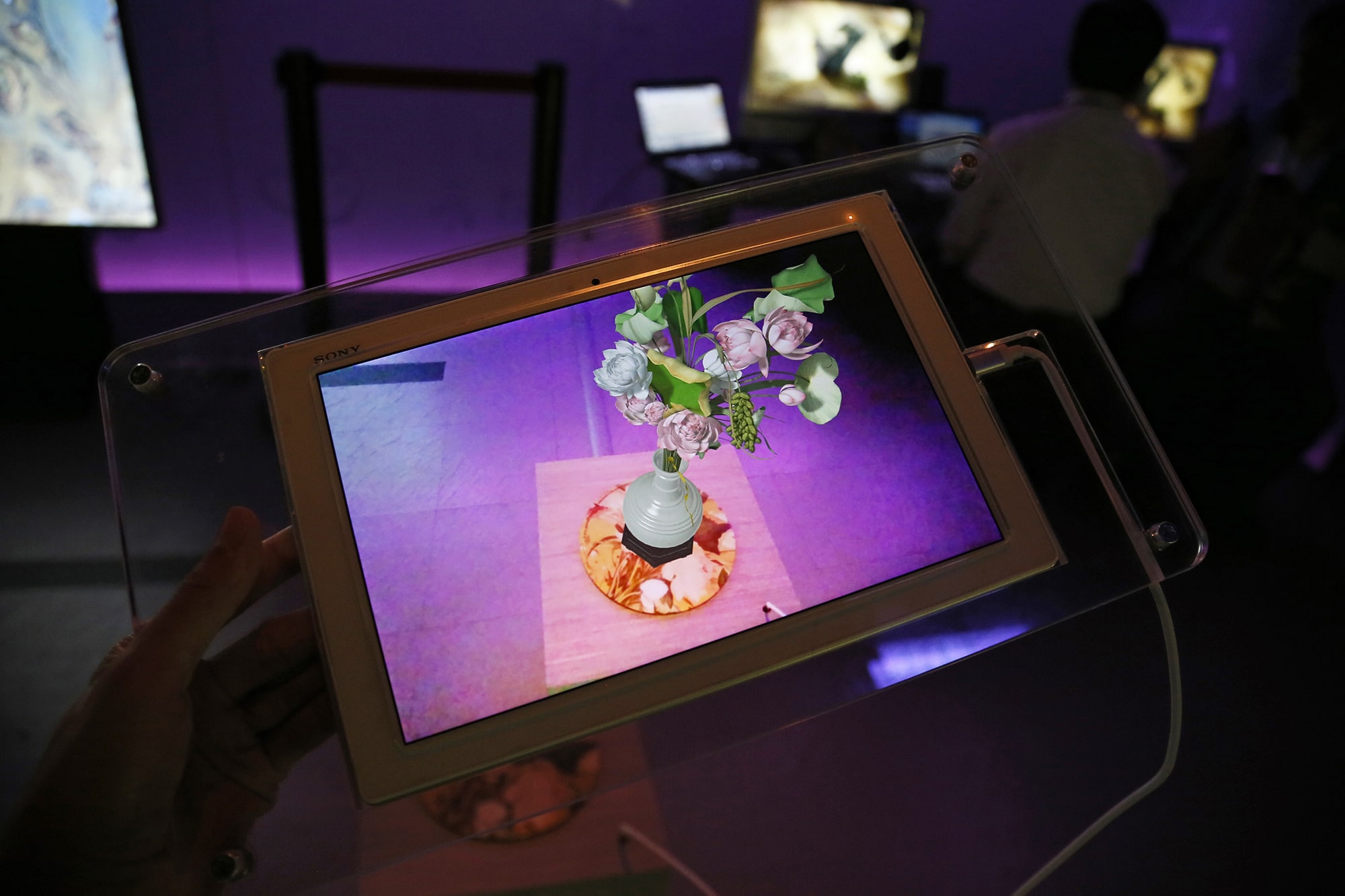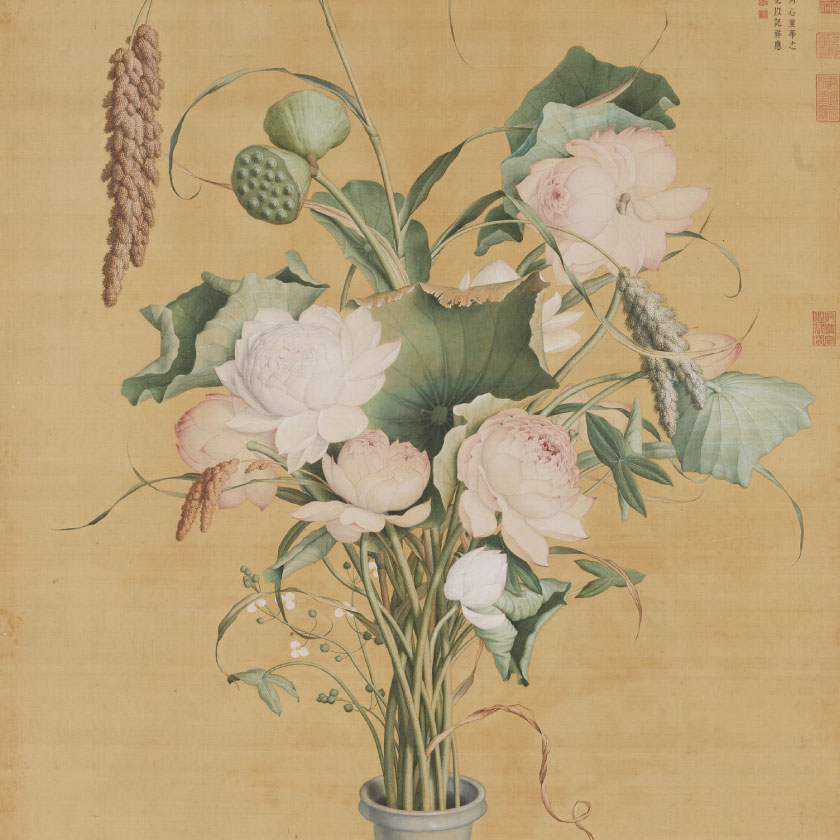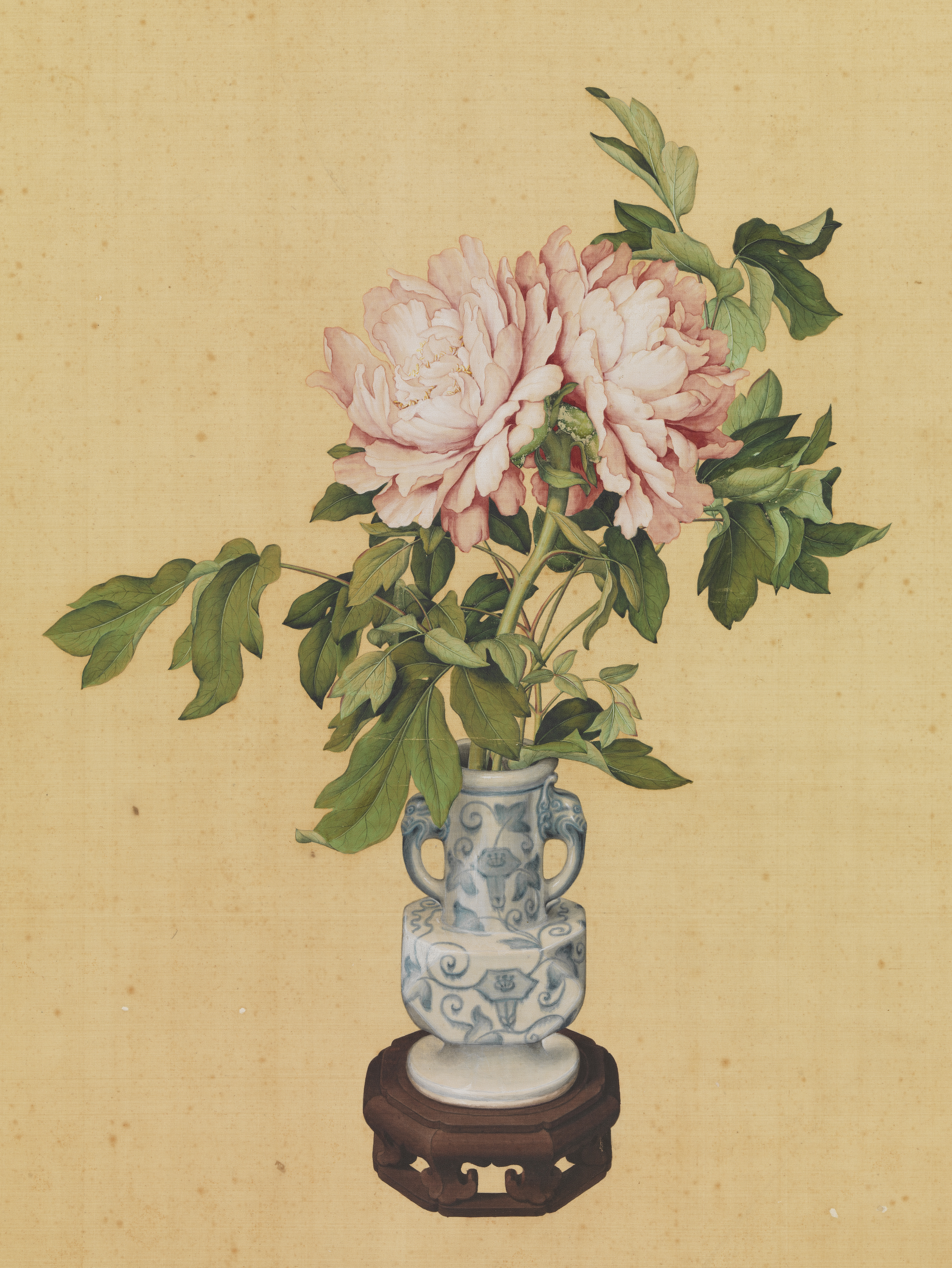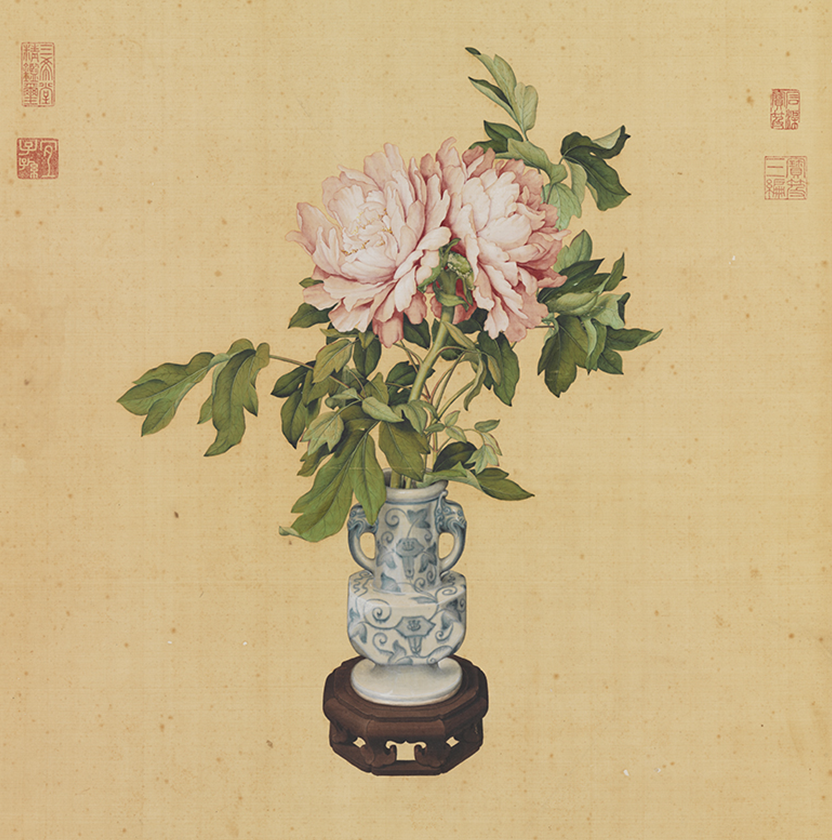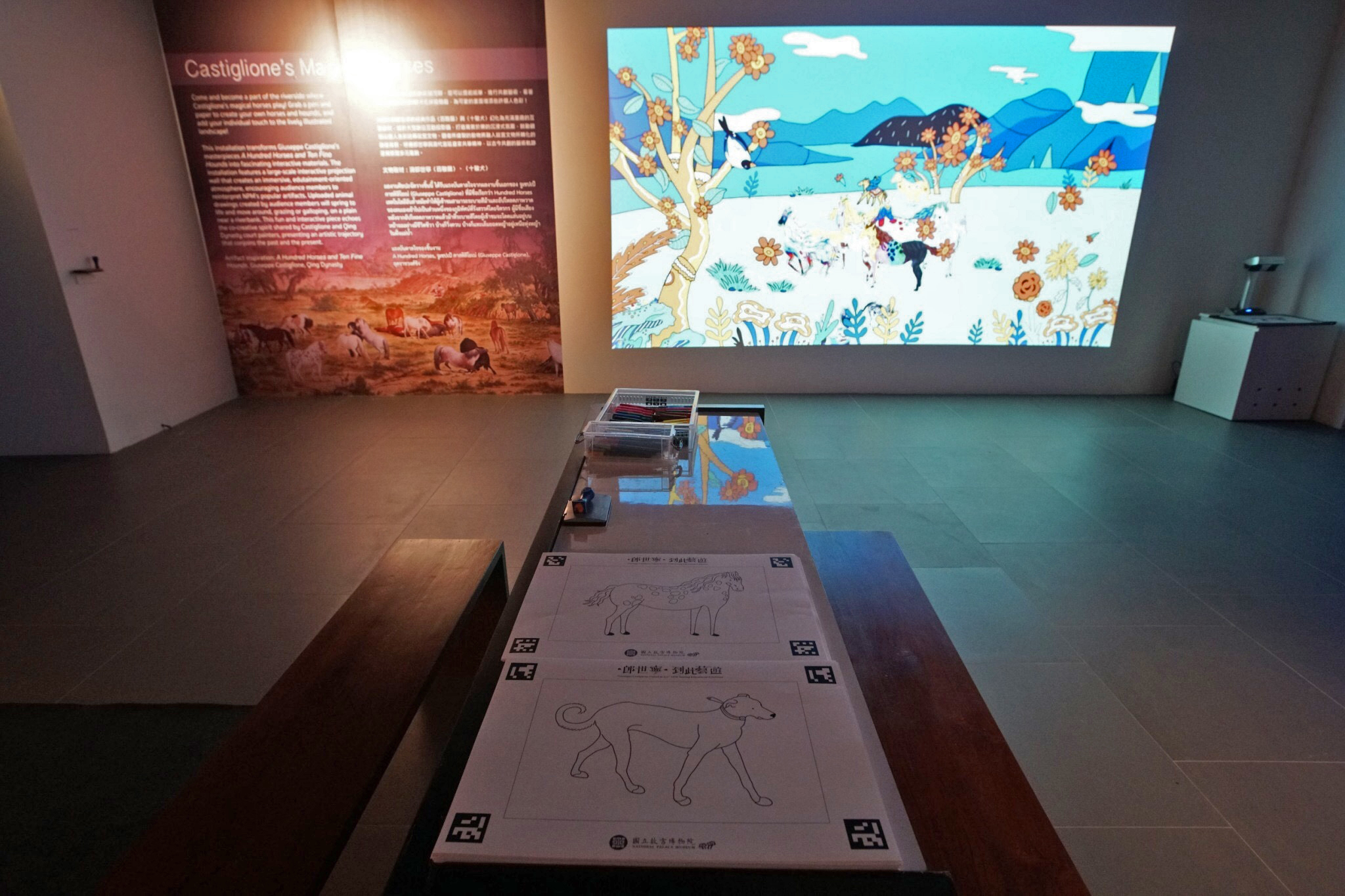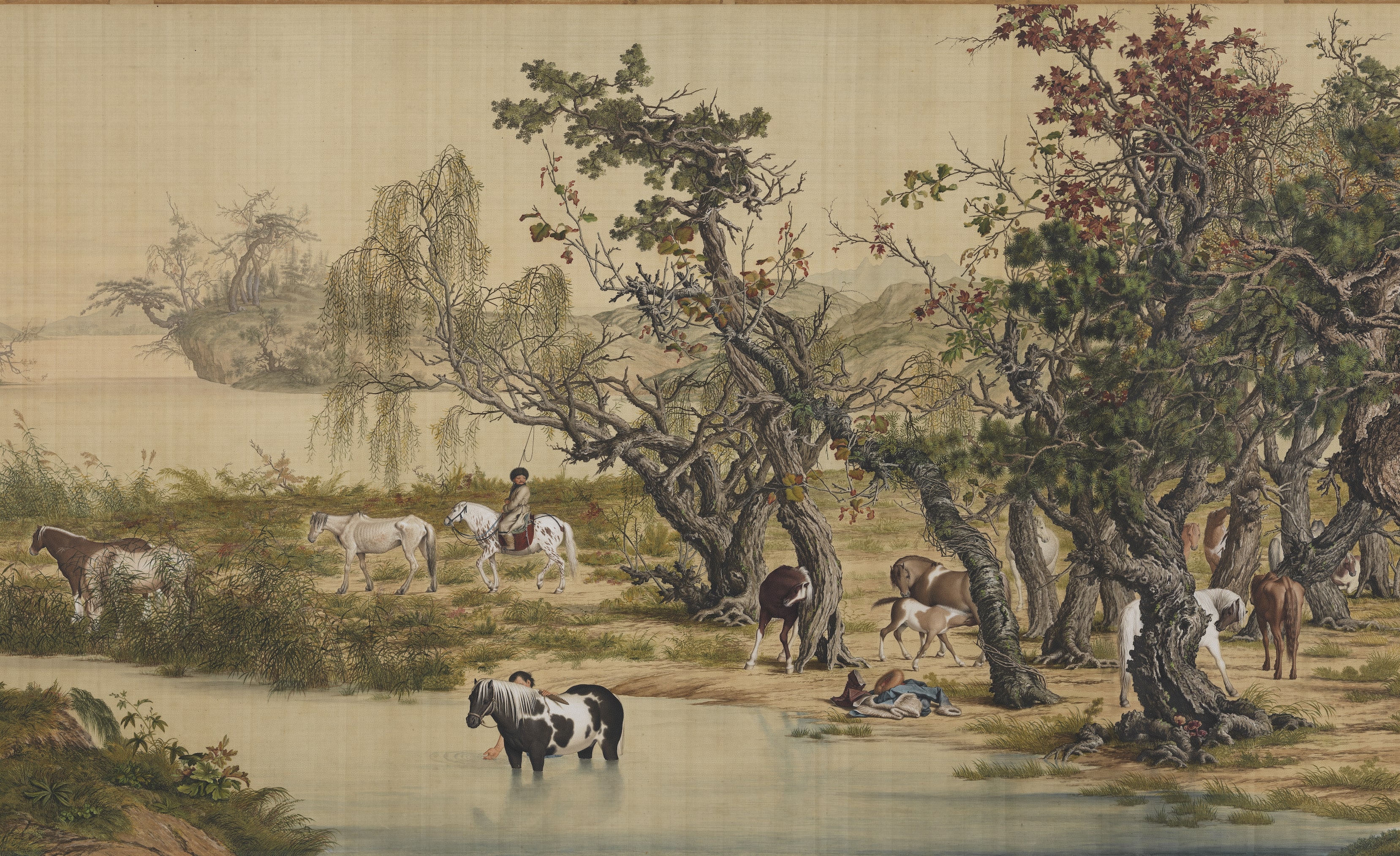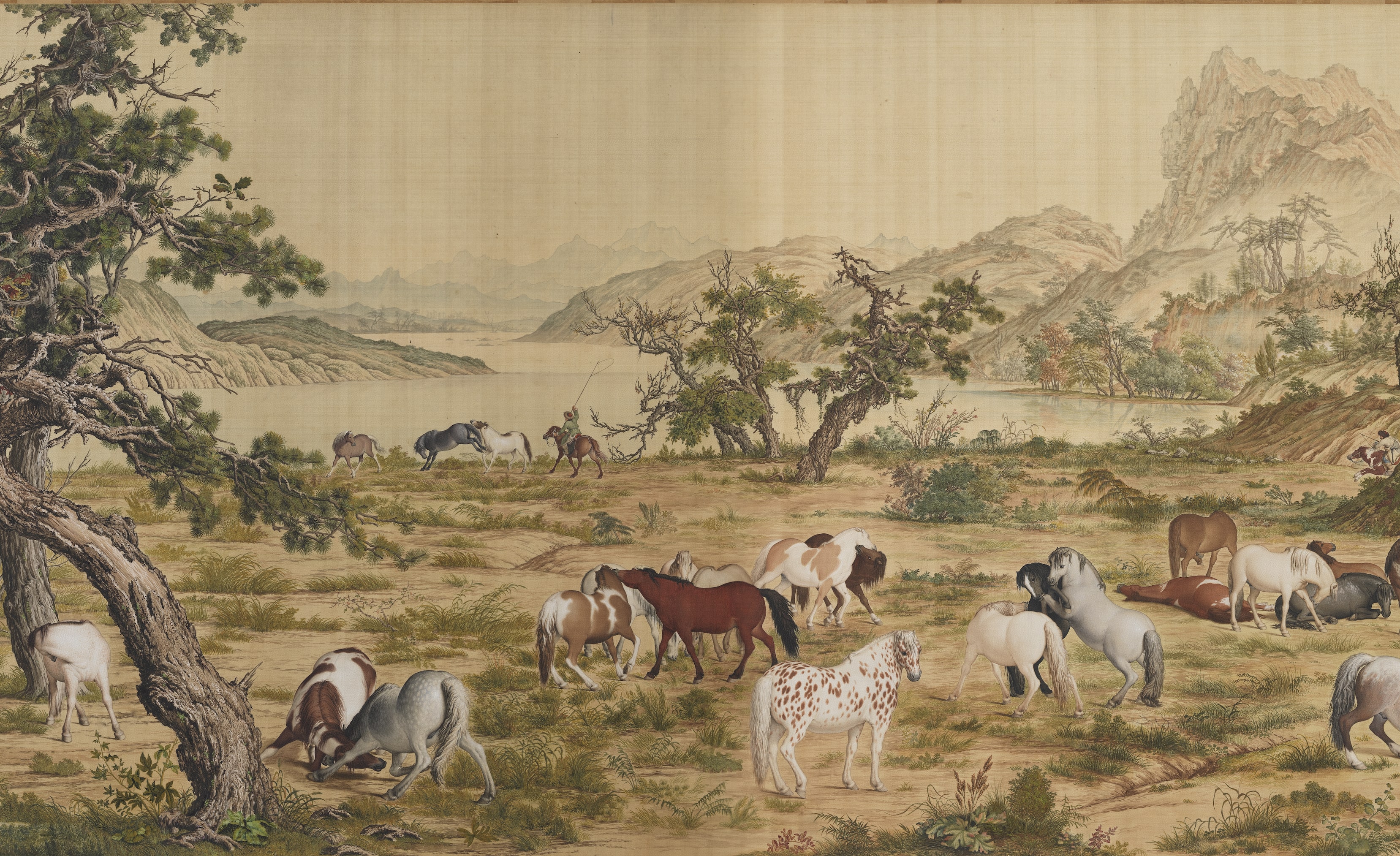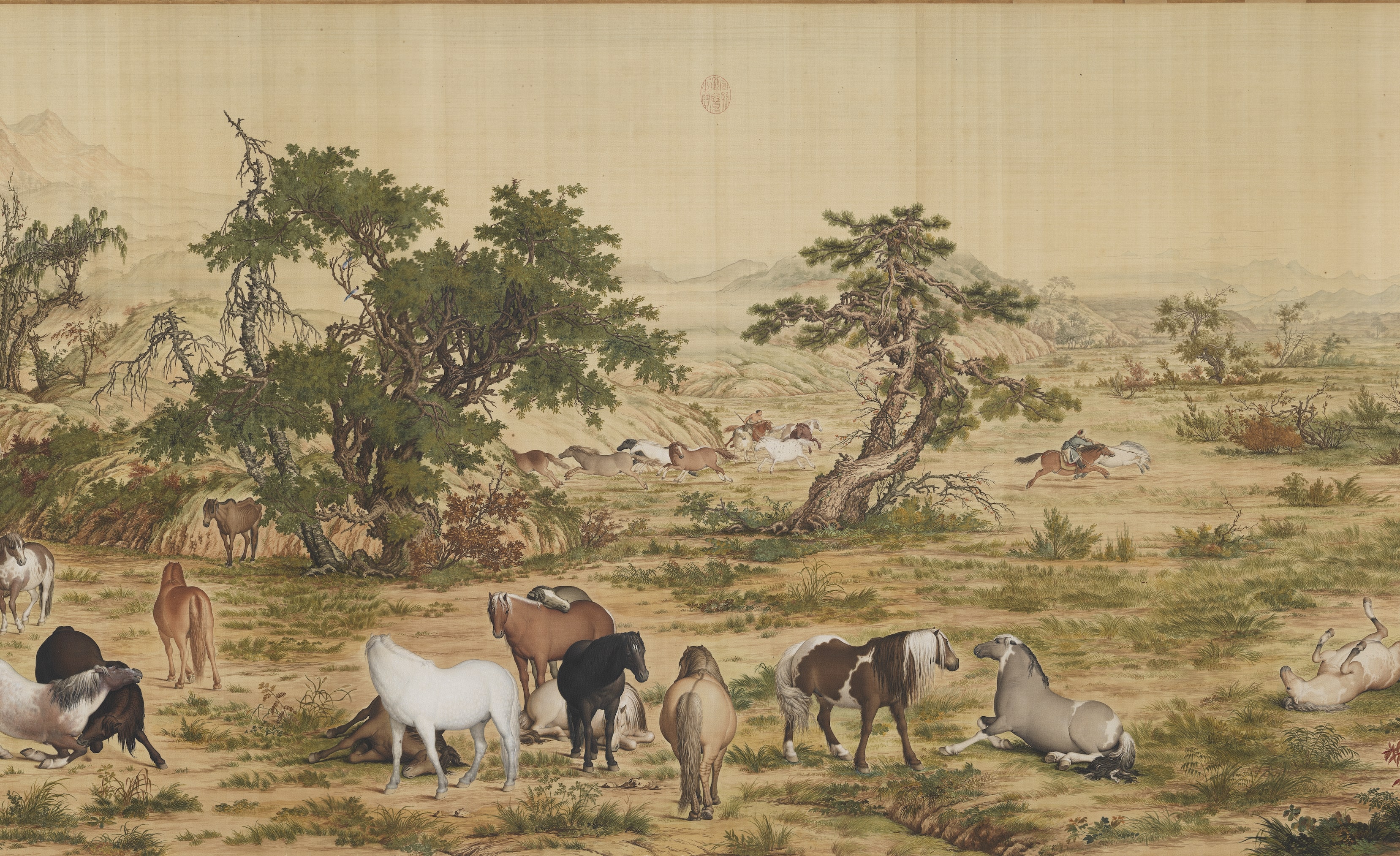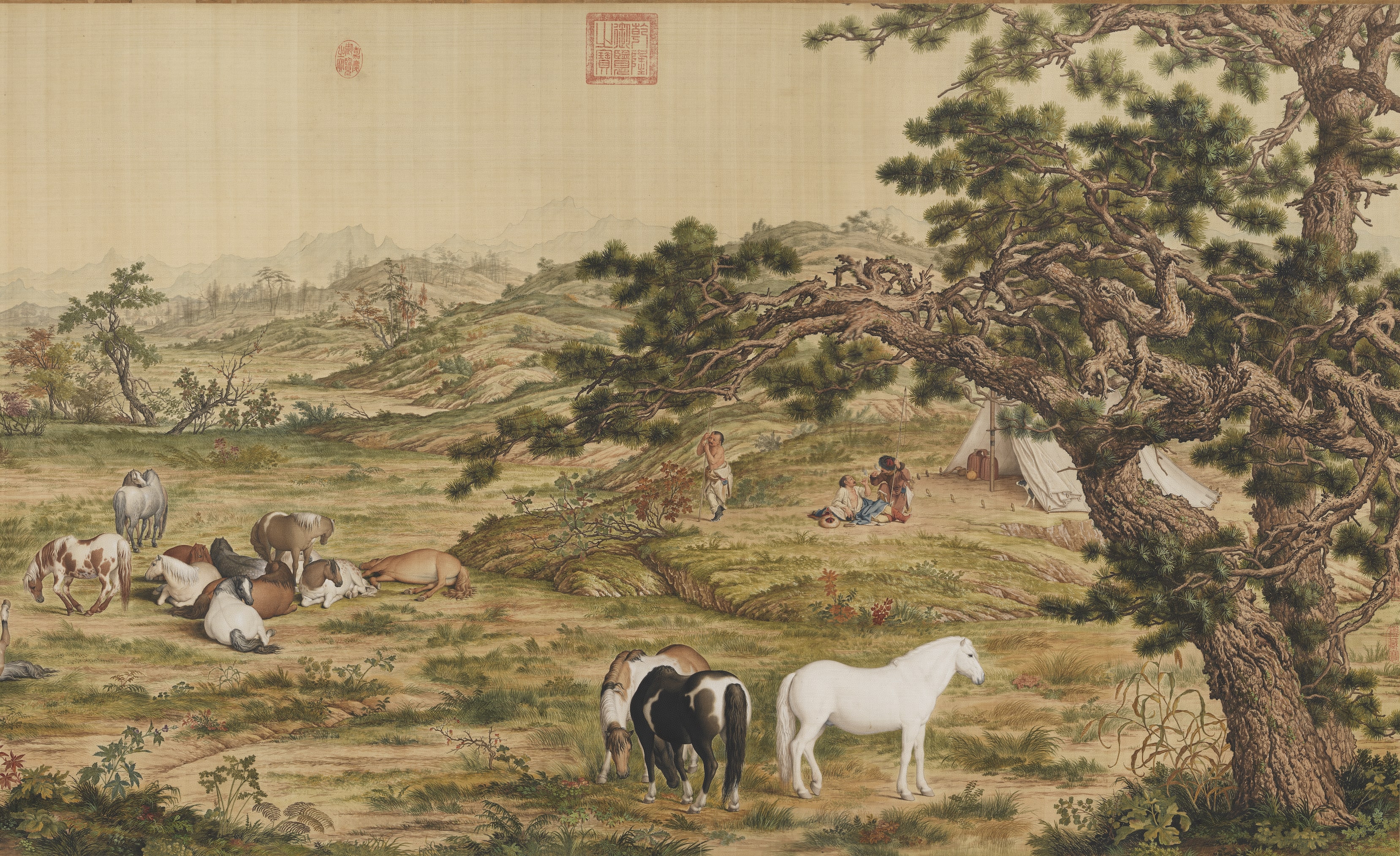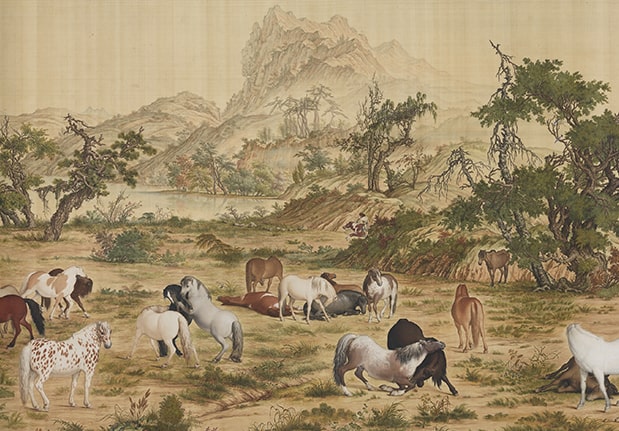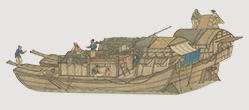
Waterside Impressions
This exhibition area, themed on riverside images, uses technological interactive devices to reinterpret classic NPM artifacts, guiding the audience to travel through time and experience the unique riverside lifestyles in the past. Here, the audience learns the close relationship between humanity and water in ancient times.
- Up: Show photo menu
- Down: Hide photo menu
- Left: Last photo
- Right: Next photo
- ESC: Leave album
-
Summer Lotus
The green of lotus leaves stretches to the heavens; lotus blossoms shine with their red in the sunshine Southern Song dynasty painter Feng Ta-yu's Lotus Blossom in the T'ai-yeh Pond portrays a lotus pond with flowers in full bloom, some of which blossom resplendently in the face of the wind, sporting dewdrops, while others are still budding in anticipation of blooming into vivid colors. In the pond, a flock of ducks swims leisurely. In the air above, butterflies flutter and swallows spread their wings, the scene teeming with vibrant life.
The interactive virtual sensory installation, which presents a scene of summer lotuses in a pond decorated with charming details depicted by the painter, allows audience members to virtually experience the dynamism of life in summer.
-
Lotuses in the Wind at Taiye
- Feng Ta-yu (12th c.), Song Dynasty (960-1279)
- Album leaf, ink and colors on silk 23.8 x 25.1 cm
The artist here filled almost two-thirds of the painting with a scene of short and tall lotuses growing from the water's surface. The blank area above represents the sky, where a swallow and a pair of butterflies fly about. The lower area devoted to the water reveals three pairs of water birds shuttling among the plants, the surface filled with duckweed of varying sizes to make for a very vivid and lively scene. The lotus leaves have been rendered with fine brushwork for the veins, the lines also expressing the twisting and turning of leaf edges. Combined with the use of light and dark shades of green to suggest the front and back of the leaves, the painting of the lotuses reveals great variety and richness, expressing a concept of space found in the interval between the Northern and Southern Song. Although this work does not depict withered lotuses, the falling of lotus petals onto the water's surface already suggests early autumn.
-
Castiglione's Virtual Flowers
Come see how the ancients ingeniously used water in their daily lives and discover how they cleverly placed auspicious flowers in vases to showcase the elegant art of floral design in ancient China.
This augmented reality installation, conceived by Professor Jeffrey Shaw, brings to life Giuseppe Castiglione's still-life masterpieces Gathering of Auspicious Signs and Vase of Flowers as life-size virtual 3D illusions. Viewers can use a digital tablet to discover the virtual vases and their flowers, which appear on top of two pedestals. Pick up the vase with your hand and see how delicately Castiglione renders auspicious Chinese symbols and exquisite flowers!
-
Gathering of Auspicious Signs
- Lang Shih-ning (Giuseppe Castiglione, 1688-1766), Qing Dynasty (1644-1911) 173x86.1cm
This work dates from 1723, making it the earliest known painting by Giuseppe Castiglione and done approximately eight years after he first arrived in China. Depicted here is an underglaze blue vase decorated with raised line patterns. Arranged in the vase are stalks of twin lotus blossoms and pods as well as double grain, plants with symbolically auspicious overtones. Although similar compositions of auspicious plants in a vase can be found from the previous Yüan (1271-1368) and Ming dynasties (1368-1644), here the outlines to the forms are all but invisible, the beautiful coloring having a strong sense of shadow that adheres more closely to Western notions of realism. The vase and its stand were painted with such exceptional detail and accuracy as to make it possible to look for similar objects from the Qing court.
-
Vase of Flowers
- Lang Shih-ning (Giuseppe Castiglione, 1688-1766), Qing Dynasty (1644-1911) 113.4x59.5cm
This painting depicts an underglaze blue vase with a twin stalk of peony blossoms. The work is undated, but the Song-script style of Castiglione's signature probably dates it from the Yung-cheng reign (1723-1735). The description of the peony blossoms is similar to that found in the lotuses of Castiglione's "Assembled Auspiciousness" on display here, in which much less emphasis is placed on the outlines of the forms. The two works are also very similar in terms of the techniques of color usage. Combined with the treatment of shadows, in which even the luster of the glaze on the porcelain has been observed and faithfully rendered, these two works reveal features common to the same period of Castiglione's career. The porcelain vase depicted here has two beast figures for handles, and the decoration is composed of morning glory.
-
Castiglione's Magical Horses
Come and become a part of the riverside where Castiglione's magical horses play! Grab a pen and paper to create your own horses and hounds, and add your individual touch to the lively illustrated landscape!
This installation transforms Giuseppe Castiglione's masterpieces A Hundred Horses and Ten Fine Hounds into fascinating interactive materials. The installation features a large-scale interactive projection wall that creates an immersive, educational and entertaining atmosphere, encouraging audience members to reinterpret NPM's popular artifacts. Uploaded animal drawings created by audience members will spring to life and move around, grazing or galloping, on a plain near a riverbank. This fun and interactive piece echoes the co-creative spirit shared by Castiglione and Qing dynasty court painters, presenting an artistic trajectory that conjoins the past and the present.
-
One Hundred Horses
- Lang Shih-ning (Giuseppe Castiglione, 1688-1766), Qing Dynasty (1644-1911)
- Handscroll, ink and colors on silk, 94.5 x 776.2 cm
Giuseppe Castiglione, also known by his Chinese name Lang Shih-ning, was a Jesuit missionary from Italy. Known for his exceptionally fine skill in painting, his work was appreciated by 3 emperors and he painted for the Qing court. In China, he excelled at painting figures and animals. This work shows a plain with a hundred horses at leisure in various poses. Every detail was realistically done. The beautiful coloring, intricate composition, and compelling realism reveals a fusion of Eastern and Western techniques. Traditional Chinese techniques were combined with Western shading and perspective as well as Western materials, revealing a true meeting of East and West. This work is representative of Castiglione's early style.
-
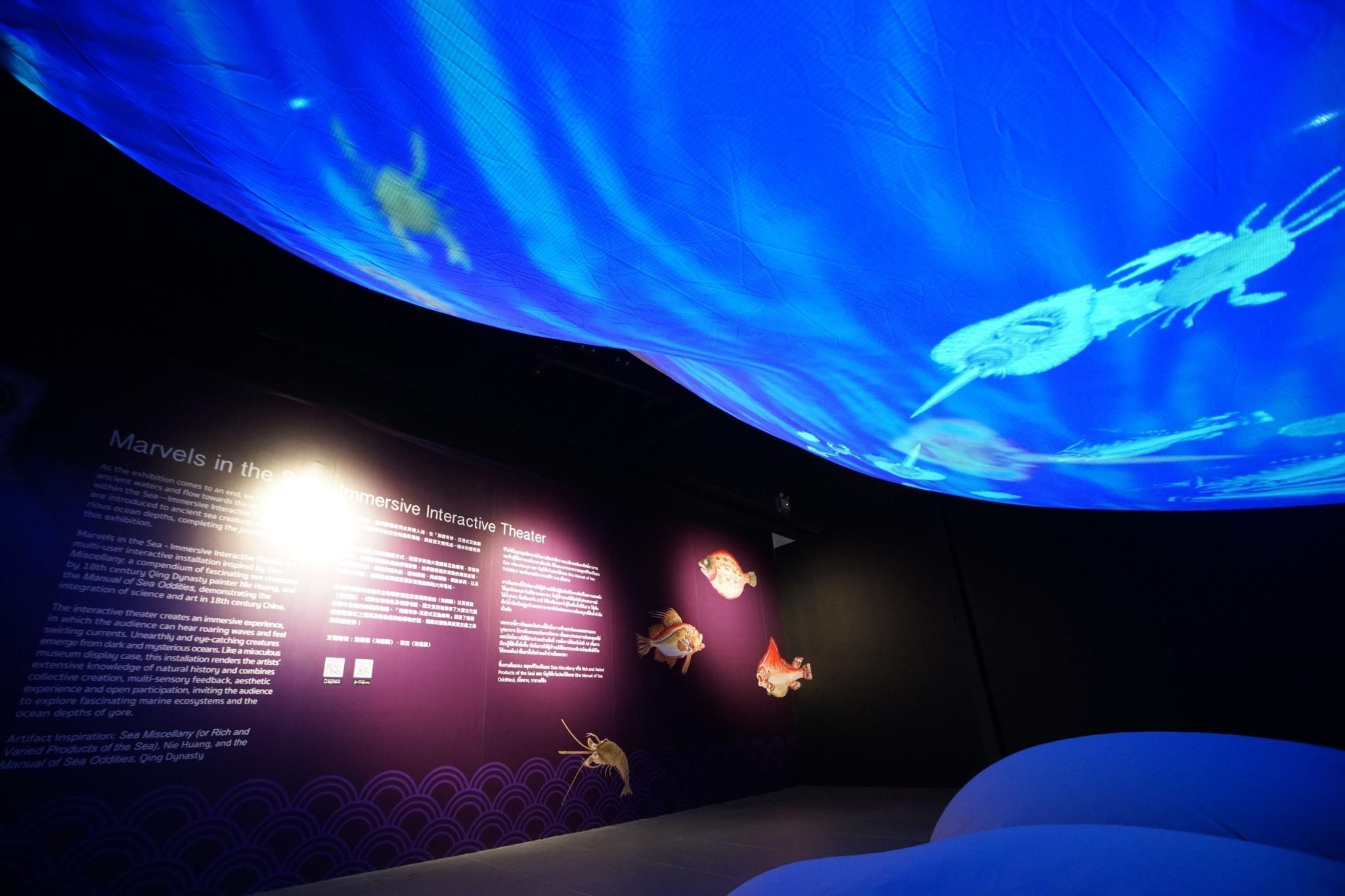
Marvels within the Sea—Immersive Interactive Theater
As the exhibition comes to an end, we travel along the ancient river and flow towards the sea. In Marvels within the Sea—Immersive Interactive Theater, visitors are introduced to ancient sea creatures and the mysterious ocean depths, completing the journey offered by this exhibition.
Marvels within the Sea—Immersive Interactive Theater is a multi-user interactive installation inspired by Sea Miscellany and the Manual of Sea Oddities by Qing dynasty painter Nie Huang, and allows the audience to interact with the exhibit by holding fishing lights in an innovative reclining position. The interactive theater creates an immersive marine experience, in which the audience can hear roaring waves and feel swirling currents. Unearthly and eye-catching creatures emerge from dark and mysterious oceans. Like a miraculous museum display case, this installation combines collective creation, multi-sensory feedback, aesthetic experience, open participation, and augmented reality extended learning, opening a window for the audience to explore fascinating marine ecosystems from a fishing vessel.
